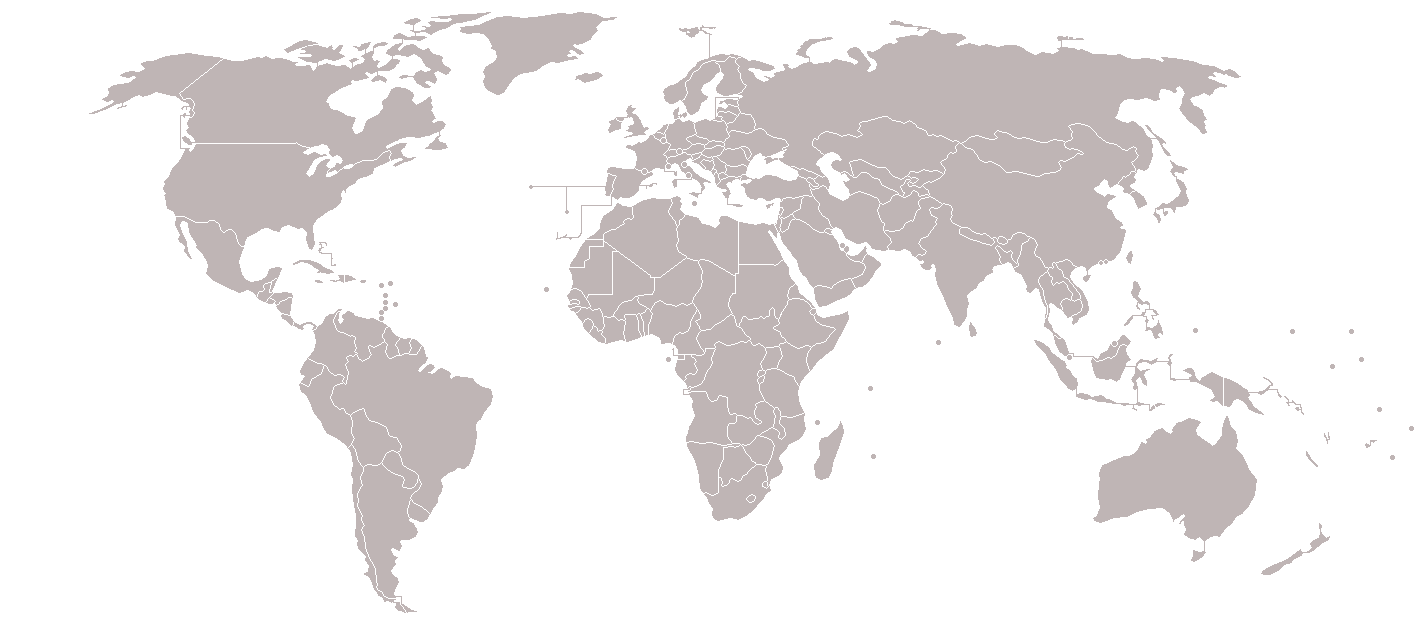Are you tired of putting all your financial eggs in one basket? Seeking better opportunities for growth and security? Investing in multiple countries might be the best strategy for you.

Why limit yourself to a single country’s economic performance when you can tap into a world of possibilities? Diversifying your investment portfolio across borders can be a game-changer. The beauty of modern investing lies in its global accessibility. Financial advisors frequently advocate for including foreign stocks in your portfolio to foster a healthy and balanced investment approach.
Investing internationally allows you to capitalize on growth in booming markets and emerging economies, not solely relying on the domestic market’s fluctuations. The benefits are clear: increased potential for higher returns, reduced risk, and enhanced resilience to market fluctuations.
Expanding your horizons to multiple countries is your best bet if you seek to open a world of possibilities and make the most of your investments.
Benefits of Investing in Multiple Countries

Reducing Risk through Global Diversification
Investing in multiple countries allows you to spread your investments across different economies and markets. Each country has unique economic factors, political climate, and market conditions. By diversifying internationally, you can minimize the impact of any adverse events that might affect a single country’s economy, reducing overall portfolio risk.
A study by MSCI, a leading investment data provider, showed that over the past two decades, a globally diversified portfolio had lower volatility than a portfolio focused on a single country.
Accessing Growth Opportunities
Different countries are at different stages of economic development. While some may be experiencing slower growth, others might be flourishing. Investing in multiple countries allows you to gain exposure to a broader range of industries and companies, tapping into higher growth opportunities. For instance, according to data from the International Monetary Fund (IMF), emerging markets have consistently outperformed developed markets regarding GDP growth in recent years.
Hedging against Currency Risk
Currency fluctuations can significantly impact the value of your investments. Investing in multiple countries can benefit from currency diversification, which acts as a hedge against currency risk. If one currency depreciates, the value of investments denominated in other currencies may increase, helping to offset losses.
Enhancing Portfolio Performance
Research conducted by Vanguard, a renowned investment management company, indicates that a globally diversified portfolio has historically provided higher risk-adjusted returns than portfolios focused solely on domestic markets. The data suggests that international diversification can lead to enhanced long-term portfolio performance.
Taking Advantage of Market Cycles
Different countries and regions may experience economic cycles at different times. While one market may be in a downturn, another might be thriving. By spreading your investments globally, you can capitalize on the different phases of various markets, improving your chances of achieving consistent returns over time.
Best Countries With Investment Opportunities
- United States
- GDP: $23.0 trillion
- Population: 332 million
- GDP per capita, PPP: $69,288
The United States has the largest economy globally, with diverse industries contributing to its economic success. Key sectors for investment include:
Technology: The US is home to Silicon Valley, a global hub for technology and innovation. Companies in artificial intelligence, biotechnology, renewable energy, and cybersecurity present attractive investment opportunities.
Finance: Wall Street in New York City serves as a financial epicenter, offering investment prospects in banking, fintech, and venture capital.
Healthcare: With a growing aging population, healthcare-related investments in pharmaceuticals, medical devices, and telemedicine are promising.
- Japan
- GDP: $4.94 trillion
- Population: 126 million
- GDP per capita, PPP: $42,940
Japan has a highly developed and advanced economy focusing on technology and exports. Key investment sectors include:
Automobiles: Japan is known for its automotive industry, with companies like Toyota, Honda, and Nissan leading innovation and production.
Electronics: Japanese electronics companies like Sony and Panasonic have a global presence, making this sector attractive for investment.
Renewable Energy: As Japan moves away from nuclear energy, there are investment opportunities in solar, wind, and other renewable energy sources.
- South Korea
- GDP: $1.80 trillion
- Population: 51.7 million
- GDP per capita, PPP: $46,918
South Korea boasts a highly developed economy known for its technological advancements. Key investment sectors include:
Technology: South Korea is a global leader in electronics, semiconductors, and telecommunications, presenting investment opportunities.
Automobiles: Companies like Hyundai and Kia have gained international acclaim, making the automobile industry a viable investment option.
Entertainment: The Korean entertainment industry, including K-pop and Korean dramas, has a significant global following, making it an emerging investment sector.
- Singapore
- GDP: $397 billion
- Population: 5.45 million
- GDP per capita, PPP: $116,486
Singapore is renowned for its pro-business environment and strategic location in Southeast Asia. Key investment sectors include:
Finance: As a financial hub, Singapore offers investment opportunities in banking, asset management, and fintech.
Logistics and Shipping: The country’s busy port and strategic location make logistics and shipping lucrative investment options.
Biotechnology: Singapore has been investing heavily in biotechnology and life sciences, presenting opportunities for growth in this sector.
- China
- GDP: $17.7 trillion
- Population: 1.41 billion
- GDP per capita, PPP: $19,338
China has experienced rapid economic growth, becoming the world’s second-largest economy. Key investment sectors include:
Technology: China has a thriving technology sector, with companies like Alibaba, Tencent, and Huawei leading innovation.
Consumer Goods: The rising middle class in China has increased the demand for consumer goods, making it an attractive investment area.
Infrastructure: China’s focus on infrastructure development opens up investment prospects in construction and transportation.
- Germany
- GDP: $4.22 trillion
- Population: 83.1 million
- GDP per capita, PPP: $57,928
Germany has a strong and diverse economy, focusing on manufacturing and exports. Key investment sectors include:
Automobiles: German automobile manufacturers like BMW, Volkswagen, and Mercedes-Benz are renowned globally, making this a promising sector for investment.
Machinery and Engineering: Germany is a leader in machinery and engineering, presenting investment opportunities in this sector.
Renewable Energy: Committing to green energy, solar, and wind power investments are attractive options.
- United Arab Emirates
- GDP: $359 billion
- Population: 9.99 million
- GDP per capita, PPP: $66,766
The United Arab Emirates (UAE) is known for its oil-based economy but has been diversifying its industries in recent years. Key investment sectors include:
Real Estate: The UAE’s real estate sector offers investment prospects, especially in cities like Dubai and Abu Dhabi.
Tourism: With a focus on tourism and hospitality, investments in hotels, resorts, and entertainment are promising.
Renewable Energy: The UAE has been investing in renewable energy projects, creating opportunities in this sector.
Strategies for Foreign Investors

Investing in multiple countries can offer significant advantages to investors seeking to diversify their portfolios and mitigate risks. However, real-time research backed by data is crucial to make informed decisions. Here are some essential strategies for investing in multiple countries:
Understand Global Economic Trends
To invest successfully in multiple countries, it is vital to have a clear understanding of global economic trends. Monitor critical indicators such as GDP growth rates, inflation, and unemployment across different regions. Analyzing these trends can provide insights into the health of various economies and help identify promising investment opportunities.
Assess Country-Specific Risk Factors
Each country presents unique risks, including political instability, currency fluctuations, and regulatory changes. Conduct thorough research to understand these risk factors and how they might impact your investments. Utilize real-time data to stay up-to-date with any shifts in the economic or political landscape that may affect your investment decisions.
Stay Informed about Currency Fluctuations
Currency movements can significantly impact international investments. Keep track of currency exchange rates and how they affect the value of your investments in different countries. Following are some of the factors which affect currency rates worldwide:
- Economic Performance: A country’s economic health significantly influences its currency value. Strong economic growth, low inflation, and stable employment rates strengthen a currency.
- Interest Rates: Central banks set interest rates, affecting borrowing costs and, in turn, currency values. Higher interest rates attract foreign investors, leading to a stronger currency.
- Political Stability: Political uncertainties can negatively impact a country’s currency. Stable governments foster confidence in investors, while political instability can cause currency depreciation.
- Trade Balance: A nation’s trade balance, the difference between exports and imports, influences its currency. A positive trade balance (exports>imports) can strengthen the currency.
- Foreign Investment: Foreign investors’ interest in a country positively affects its currency. The higher foreign investment reflects confidence in the economy.
- Speculation: Currency markets can be influenced by speculation, where investors predict currency movements based on various factors.
- Geopolitical Events: Due to perceived risks, significant events like conflicts or geopolitical tensions can cause currency fluctuations.
- Central Bank Interventions: Central banks may intervene in currency markets to stabilize their currency’s value, impacting exchange rates.
Consider hedging strategies to mitigate currency risk significantly when investing in countries with volatile currencies.
Utilize Exchange-Traded Funds (ETFs)
ETFs offer a convenient way to invest in multiple countries with a single investment vehicle. These funds track indexes representing specific regions or sectors, allowing you to gain exposure to a diverse range of assets. Research various ETFs to find ones that align with your investment goals and have a track record of consistent performance.
Use Online Data and Research Platforms
Numerous online platforms provide real-time data, analysis, and research reports on global markets. These platforms offer valuable insights into economic indicators, market trends, and investment opportunities. Rely on reputable sources to ensure the accuracy and reliability of the information you use for making investment decisions.
Bottom Line
Diversifying your investment portfolio across multiple countries is a smart move that can significantly enhance your financial prospects. However, before taking the plunge, it’s crucial to grasp each country’s political and economic climates on your investment radar. With careful planning and research, investing in multiple countries can lead you toward a more prosperous future.








